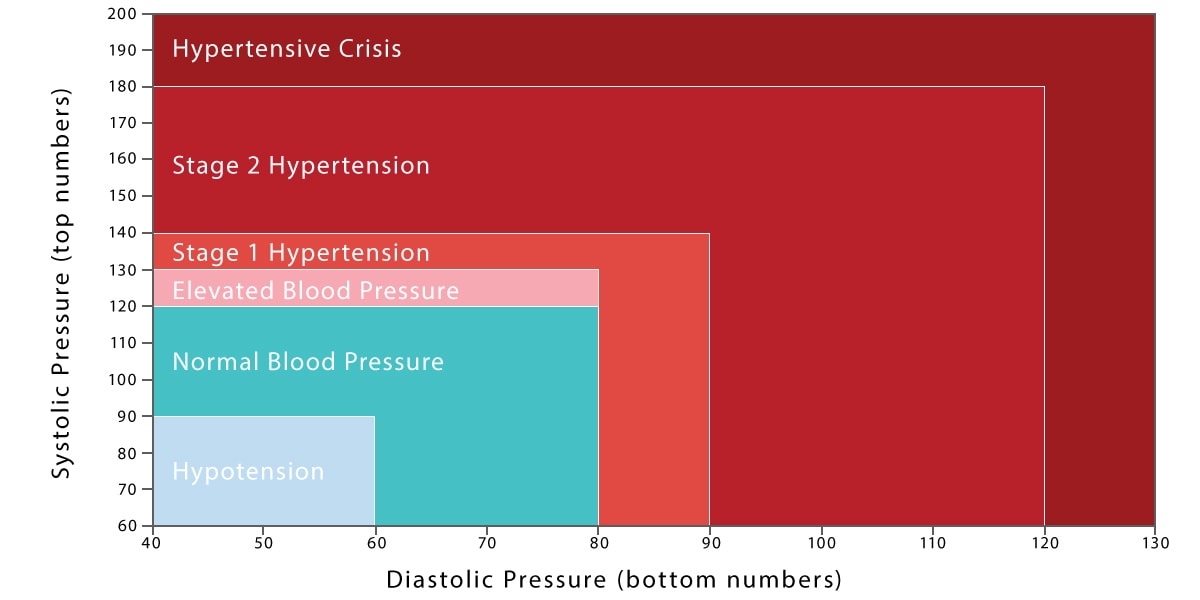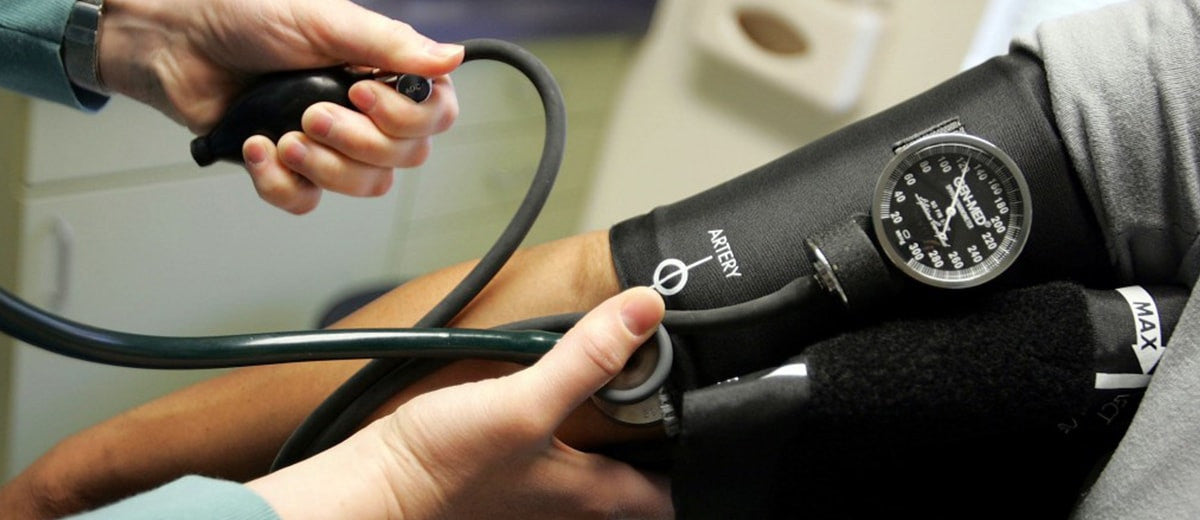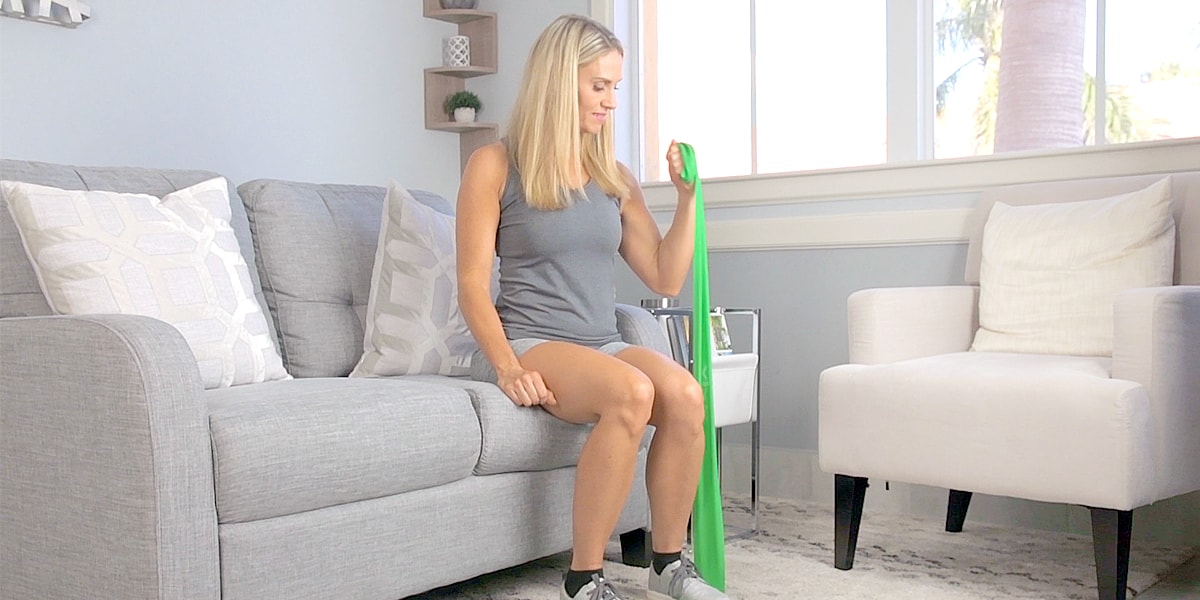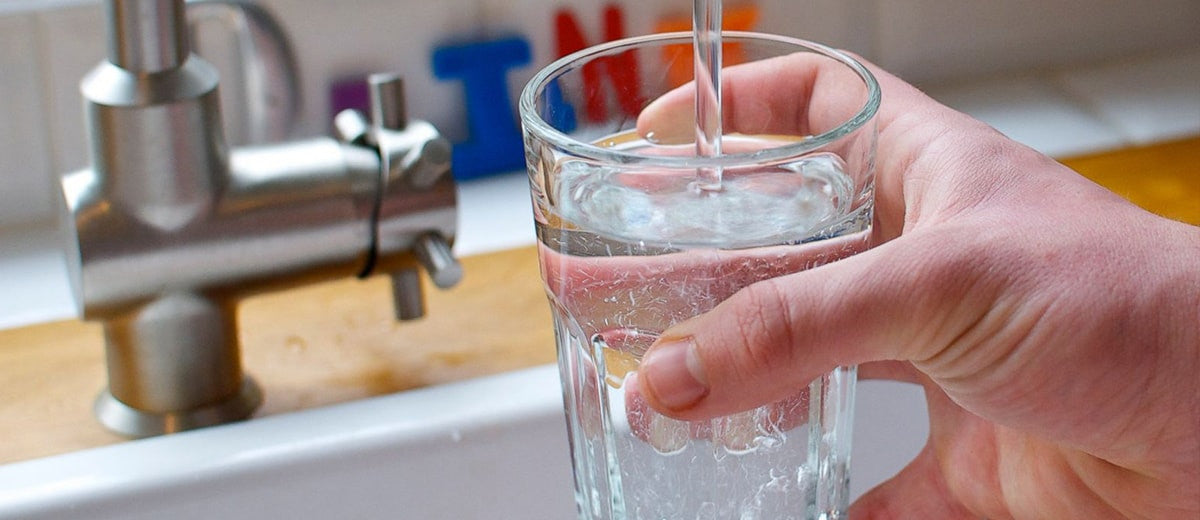800-487-3808
800-487-3808

We all know that understanding blood pressure & maintaining healthy readings are important for our overall health and longevity. After all, it’s one of the most talked about indicators of health, particularly when it comes to your heart.
But what exactly is blood pressure? Do you know what your blood pressure numbers mean? Compare your measurements to the charts below and read about understanding blood pressure readings.
In many ways, our circulatory system works the same as the plumbing in our homes, except much more complicated. Just like water through pipes, blood flows through our arteries because of differences in pressure. It moves from areas of high pressure (the heart) to areas of low pressure all across the body.
However, conditions like high cholesterol that constrict or block arteries can cause this pressure to be unnaturally elevated. This is what causes dangerous conditions like heart attack and stroke.
In 2017, the American Heart Association released a new set of stricter guidelines. Changing the numbers means that more Americans will now meet the guidelines for high blood pressure, also known as hypertension. Here are some of the changes:
The AHA is putting more pressure on Americans to stay on top of their readings. They recommend that routine measurements are taken on a regular basis at home and not just at the doctor’s office.
By eliminating the Prehypertension category, more Americans now fall into the range of high blood pressure. The goal behind these changes is to initiate prevention, evaluation, and treatment of higher numbers far sooner than in the past.
Checking your blood pressure at home is easy as long as you have the right equipment. All you need is a quality Blood Pressure Monitor Kit and a few spare minutes.
For more detailed instructions, take a look at our in-depth guide. Also, try to keep these tips in mind:
Next time you have a doctor’s appointment, bring along your home monitor and have your doctor compare readings between your device and theirs. You should re-test for accuracy in this manner if you drop or damage the device.
To confirm that you are using your device properly, ask your doctor to watch you take a reading. For the greatest accuracy, take two or three readings each time, leaving two minutes between results.
When taking your blood pressure, it’s imperative that the cuff is put on correctly before starting the measurement. Be sure to refer to your device’s manual for specifications and instructions on proper placement. Also, ensure that the cuff is appropriately sized for your arm. Universal cuff sizes work for most, but custom small or large cuffs are available.
You should measure your blood pressure in the morning, but not immediately after waking. Make sure to take a reading before you exercise, eat, or take medications.
In the evening, take a second reading, ensuring it’s not within 30 minutes of eating, smoking, or consuming caffeine or alcohol.
Use the same arm each time you take your blood pressure. Prop up the arm, at heart level, on a steady surface, using a cushion if necessary. You should place the cuff against your bare skin rather than your clothing.
Stress can cause your blood pressure to shoot up, which can leave you feeling even more stressed! Stay Zen-like before taking your daily readings for a more accurate result.
If your device doesn’t automatically log your results, write them down on a dedicated notepad. It’s normal for there to be some variation in readings. For example, your blood pressure numbers are often higher in the morning or when taken at the doctor’s office.
However, if you have concerns about any of your blood pressure readings, contact your doctor.
Please remember that for an official blood pressure diagnosis and treatment regimen, you must consult your primary physician or medical care professional who will do a thorough assessment to determine the proper diagnosis.
Enter both Systolic & Diastolic readings (in mm Hg) below. Results will display the corresponding blood pressure category & information regarding the causes, symptoms, and treatment options for your range of blood pressure.
Understanding blood pressure numbers is a crucial part of overall well-being. When your heart beats, it moves blood through your body to deliver oxygen and other nutrients. The blood pushes on the walls of the blood vessels as it travels through the body. The force of the blood pressing against the vessel walls is known as blood pressure.
Your blood pressure readings consist of two numbers:
Your systolic blood pressure measures the pressure on the walls of the vessel as your heart is contracting or beating. It is recorded as the top number in your blood pressure reading.
Your diastolic blood pressure is the pressure in the vessels while the heart is relaxed, in between heartbeats. It is recorded as the bottom number in your blood pressure reading.
Your blood pressure is reported by placing the systolic number over the diastolic number. For example, your blood pressure might be reported as 120/80. To be diagnosed with high blood pressure, only one of these numbers must be outside of the normal range. But, remember that one high reading doesn’t mean there’s a problem. High blood pressure is a condition that can only be diagnosed by your doctor.
Generally, systolic blood pressure is a more decisive factor when assessing the risk for cardiovascular disease in people over 50. As we age, systolic blood pressure tends to rise as a result of the stiffening of large arteries. However, doctors use both numbers when diagnosing high blood pressure.
The American heart association breaks down cardiovascular health into five distinct categories. However, don’t forget that a doctor is required to make a medical diagnosis.

The categories above are based off the official American Heart Association blood pressure guidelines, which were recently updated in November of 2017 ( Chart Reference )
*For proper blood pressure diagnosis, talk to your primary care physician or cardiologist
The AHA considers readings below 120/80 mm Hg to be within the normal range. If your blood pressure reading is within this range, that’s great news for your arteries, heart, brain, and kidneys!
This range of blood pressure is defined by readings that consistently range from 120 to 129 systolic and below 80 mm Hg diastolic. At this stage, there may be no noticeable hypertension symptoms, but damage to the body may still be occurring, and your risk of heart attack and stroke is increased.
Click below to learn more about what causes elevated blood pressure, the symptoms & the best treatment methods
Readings in this category range from 130 to 139 mm Hg systolic over 80 to 89 mm Hg diastolic, depending on age. Many people with stage 1 hypertension don’t experience any noticeable symptoms. However, your doctor may decide that you need treatment, even without symptoms. It’s vital that you follow up with your primary care doctor for any blood pressure concerns.
If not addressed, stage 1 hypertension will increase your risk of heart attack, stroke, and other serious health issues. It may also progress to stage 2 hypertension.
Click below to learn more about what causes stage 1 hypertension, the symptoms & the best treatment methods
Blood pressure readings higher than 140/90 mm indicate stage 2 hypertension, which is considered severe high blood pressure. This is a serious condition and requires immediate treatment, which includes eliminating the root causes of the condition. At this stage, your risk of heart attack, stroke, and other serious health issues greatly increases.
Click below to learn more about what causes stage 2 hypertension, the symptoms & the best treatment methods
The term Hypertensive Crisis encompasses both Hypertensive Urgency and Hypertensive Emergency. These conditions are caused by untreated hypertension and require immediate attention.
If your blood pressure reading is 180/120 or higher, wait about five minutes and retake your blood pressure. If you have two readings that are this high, but you aren’t having any other concerning symptoms such as chest pain, back pain, shortness of breath, change in vision, numbness/weakness, or difficulty speaking, you are experiencing hypertensive urgency.
Contact your physician immediately to discuss next steps. This type of blood pressure problem can usually be handled by adjusting your medications, but it is crucial that you speak to your doctor.
If your blood pressure reading is 180/120 or higher and you’re experiencing symptoms such as shortness of breath, back pain, chest pain, numbness/weakness, change in vision, or difficulty speaking, you’re having a hypertensive emergency and need to seek emergency medical attention. Do not wait to see if your blood pressure improves. Call 911 or head to the nearest emergency room.
To treat this serious condition, doctors may give you blood pressure medications intravenously, or offer other treatments aimed to decrease your risk of long-term effects.
If left untreated, you might begin to experience signs of organ damage that include:
For many people, no one specific factor leads to the development of high blood pressure. It tends to develop gradually over time as a result of age and the build-up of fatty deposits in the arteries.
However, some lifestyle factors can speed up the onset of high blood pressure. A few of these factors include a high-sodium diet, too much alcohol, inactivity, and stress.
Health conditions like thyroid disease, kidney disease, and sleep apnea might increase your risk of high blood pressure. Taking medications such as prescription drugs, decongestants, and pain relievers may also be contributing factors.
For infants, toddlers, and pre-adolescent aged children, doctors follow separate guidelines and standards to define high blood pressure. Average readings tend to be lower at a younger age and increase as you grow older. During late adolescence (around 17-19 yrs old) doctors typically begin to follow the standard adult guidelines for high blood pressure.
As you age, your risk of developing high blood pressure increases.
Click Here for Pediatric Blood Pressure Chart by Age Reference
Blood pressure charts aren't commonly broken down by age, however, pediatric charts are often separated into ranges for infants, toddlers, and pre-adolescents. Pediatric standards for high and low blood pressure differ from those used for adults. Sometimes gender can influence readings, but measurements are still compared on the same scale. ( Chart reference )
 Risks associated with high blood pressure can become life-threatening if not adequately monitored or addressed ( Image reference )
Risks associated with high blood pressure can become life-threatening if not adequately monitored or addressed ( Image reference )
Most people with high blood pressure, particularly prehypertension and stage 1 hypertension, don’t experience any symptoms. Even at stage 2, hypertension may not cause any noticeable effects. Those who do experience symptoms may notice:
However, even in the absence of symptoms, the elevated blood pressure is still damaging your blood vessels and heart and can cause serious health complications. Some of the most common include:
For these reasons, regular check-ups along with at-home blood pressure monitoring are necessary to stop progression or reverse some of the damage done.
Personal characteristics which play a role in blood pressure readings are:
According to the National Institute on Aging, males are more likely to have high blood pressure before age 55, while normal blood pressure for women tends to rise after menopause. Women are less likely than men to experience complications associated with high blood pressure.
However, regardless of differences in the prevalence and complications of high blood pressure between the sexes, treatment and diagnosis are the same for both men and women.
As you age, your body goes through many changes that can put you at risk for other conditions. If you’re over 50, having a higher than usual systolic pressure might increase your risk of developing heart disease. Systolic blood pressure tends to increase steadily over time due to stiff arteries, a build-up of plaque, and a higher rate of cardiac and vascular disease. This means older adults need to be even more vigilant about monitoring their blood pressure and practicing heart-healthy self-care.
Height isn't a risk factor but taller people tend to have higher blood pressure because this offsets gravity and other factors to ensure the brain - the highest organ - gets enough blood flow and oxygen. However, the effect of height is minor, so it’s not taken into account in blood pressure range guidelines.
Traits can be passed from one generation to the next. This is known as heredity. There is a genetic role in high blood pressure, heart disease, and other heart conditions. However, researchers believe that it may be partly due to sharing common environments and other behaviors that can increase your risk.
While a rising heart rate will increase blood flow through the body, it does not necessarily correspond with an increase in the pressure of that blood flow. This is because blood vessels can increase in size (dilate) to facilitate larger quantities of blood. Even if your heart rate were to double, your normal blood pressure & high pulse may only slightly increase blood pressure.
Whether you have prehypertension, or full-blown hypertension at any stage, the treatments options are the same. However, those with more severe high blood pressure may need to be more aggressive in their approach than those with blood pressure readings which are close to normal. Common treatment regimen include:
 A small, portable, at-home blood pressure monitor cuff is a convenient way to stay on top of your readings throughout the day ( Image reference )
A small, portable, at-home blood pressure monitor cuff is a convenient way to stay on top of your readings throughout the day ( Image reference )
If you have any of the health conditions associated with high blood pressure, including sleep apnea, kidney problems, or thyroid disease, it's essential to follow the treatment plan you were prescribed. Invest in an at-home blood pressure monitor to help track your readings. Careful monitoring can:
To make sure you find the best blood pressure monitor for your needs, take a look at our guide here.
 A healthy, balanced, diet helps to keep high blood pressure at bay ( Image reference )
A healthy, balanced, diet helps to keep high blood pressure at bay ( Image reference )
What you put in your body can have a profound impact on your health. Choose to fill your plate with fresh fruits and vegetables, whole grains, nuts, seeds and lean protein sources like fish and beans. Make sure to incorporate drinks that lower blood pressure and avoid diuretics.
For lower blood pressure and all-around better health, avoid processed foods, trans fats, and red meat, and cut down on your intake of sugar and saturated fat.
Too much dietary salt disturbs the delicate balance of sodium and potassium in the body. This increases fluid retention and puts excess strain on the kidneys and the blood vessels around the kidneys.
The American Heart Association recommends people consume no more than 1,500 mg of sodium a day - which is a little over half a teaspoon of salt. It’s not just the salt in the salt shaker you should be concerned with - research shows that over 75% of our sodium intake comes from the salt already added to processed foods and restaurant meals.
Potassium-rich foods such as potatoes, bananas, avocados, sweet potatoes, and dark leafy greens will help lessen the effects of sodium.
Make sure to engage in regular activities to bring your blood pressure back into the normal range.
Exercise causes the body to release nitric acid, which helps blood vessels to dilate, reducing blood pressure. Regular activity also helps with weight loss, stress reduction, and heart health.
 Resistances bands are simple way to add routine exercise into your daily life & maintain normal readings or lower high blood pressure. ( Find the Best Resistance Band Sets Here )
Resistances bands are simple way to add routine exercise into your daily life & maintain normal readings or lower high blood pressure. ( Find the Best Resistance Band Sets Here )
Walking, cycling, swimming, water aerobics, golf (without a cart), and yoga are all fantastic exercises for adults of all ages. You can even get in a little cardio without having to leave home with a Pedal Exerciser.
Don’t forget that other everyday activities which involve movement - known as incidental physical activities - can contribute to improved fitness levels, at least according to some research. This includes things like moderate intensity gardening, vacuuming, washing the car, or walking around the supermarket.
 Carrying excess weight can be dangerous to your heart health, as it requires your arteries to work harder. Set goals and track progress with a simple at home scale ( See Product on Amazon )
Carrying excess weight can be dangerous to your heart health, as it requires your arteries to work harder. Set goals and track progress with a simple at home scale ( See Product on Amazon )
If you are overweight, If you’re overweight, talk to your doctor about a weight loss regimen. Losing as little as 5 pounds can make a difference!
Being overweight or obese is also a risk factor for heart disease and type 2 diabetes, two conditions associated with high blood pressure.
Stress and anxiety may be contributing to your elevated blood pressure results. Practice relaxation techniques like deep breathing, meditation, and yoga on a regular basis to lower your blood pressure, and even bring it back within the normal range.
While we’ve all heard the health benefits of a glass of red wine now and then, too much alcohol increases blood pressure, contributes to weight gain, and can cause you to make poor food choices.
For better health, women of any age and men over 65 should enjoy no more than one drink a day, and men under 65 should have no more than two.
There are no health benefits to smoking! Nicotine not only increases blood pressure and heart rate but it also raises the risk of heart attack or stroke, and leads to narrowing and hardening of the arteries.
When dealing with high blood pressure readings, it's necessary to consult with your doctor to find proper ways to manage and prevent hypertension.
Depending on your age, lifestyle, and blood pressure readings, your doctor may recommend medication as part of a treatment program for hypertension.
It's not clear if medication is beneficial for adults who have prehypertension alone. However, if you have another medical condition along with prehypertension, such as diabetes or kidney disease, your doctor might decide it’s best to start treatment as early as possible.
Those with stage 1 and stage 2 hypertension may be prescribed one or more of the following drugs:
If your doctor has prescribed a blood pressure medication, it’s important to know how to take them to maximize their effect safely. Keep all of these tips in mind:
While all the focus seems to be on high blood pressure, low blood pressure (hypotension) is also a potentially dangerous condition. In severe cases, it can cause shock - a life-threatening condition that occurs when the body isn’t receiving adequate blood flow.
A reading of less than 90 (systolic) or 60 (diastolic) can indicate low blood pressure, although this may vary from person to person. As a result, you may not experience any symptoms of hypotension even if your blood pressure readings indicate you have it. In cases like this, a doctor may or may not recommend interventions.
There are several possible causes of low blood pressure, and you must find the root cause raise your readings back to a normal range.
Possible causes include:
Low blood pressure can also be encountered when moving quickly to a standing position after sitting or lying down. Hypotension after meals (postprandial hypotension) is common in older adults.
If you have low blood pressure, you may experience:
Severe cases of hypotension can result in shock - a life-threatening condition which requires emergency medical intervention. Shock is characterized by:
If your hypotension is just slightly below the healthy range and doesn’t cause you any symptoms, it's unlikely you need treatment.
Those who do experience symptoms may wish to:
 Water is a staple in any healthy diet, but maintaining hydration and avoiding diuretics can help to increase low blood pressure ( Image reference )
Water is a staple in any healthy diet, but maintaining hydration and avoiding diuretics can help to increase low blood pressure ( Image reference )
Drinking more water will help to raise blood volume and prevent dehydration. Steer clear of coffee, tea, and alcohol - which are diuretics - and can increase your risk of becoming dehydrated.
A diet rich in fresh fruits and vegetables, whole grains, nuts, seeds and lean protein sources like fish and beans is important for blood pressure and heart health. Avoid processed foods, trans fats, and red meat, and cut down on your intake of sugar and saturated fat.
As blood pressure tends to drop after eating, several smaller, low-carb meals spaced throughout the day may help ease symptoms. It can also be helpful to reduce your intake of high-carbohydrate foods like potatoes, white pasta, and white bread.
People with low blood pressure may actually benefit from a little extra dietary sodium, which can help to raise blood pressure. However, it’s important to discuss this with your doctor first, because too much salt can cause heart failure, especially in older adults or those with underlying health conditions.
Compression stockings are often used to treat varicose veins and can help those with hypotension by preventing blood from pooling in the legs.
Some medications are available to help those with hypotension - a doctor will be able to advise you of your options.
Hypotension which causes symptoms from quickly changing body positions can be remedied by slowing down and noticing how you move.
Be sure to move from a sitting position to a standing one gently. Before getting out of bed in the morning, practice some deep breathing exercises, and slowly move from a horizontal position to a sitting one, before gently standing upright.
If you notice symptoms while standing by crossing your legs and squeezing your thighs.
Having blood pressure outside the normal range puts your health in jeopardy. If it’s too high, you’re at risk of serious medical conditions, including heart attacks and stroke. Blood pressure that’s too low can be life-threatening in severe cases.
Regardless, ALWAYS discuss readings and health conditions with your physician to ensure accurate results and the safest actions for your health.
Keep in mind that you can have high blood pressure and not even know it. This silent condition might be doing untold harm to your body. Knowing your numbers is the only way to find out for sure if your blood pressure readings fall within the optimal range, and making smart lifestyle choices is the only way to keep them there!
Stay consistent with your health. Use the infographic below as a reminder and helpful guide to understanding your blood pressure readings. View below or click image for free PDF :)
Sources:
https://www.health.harvard.edu/blog/new-high-blood-pressure-guidelines-2017111712756
https://www.sciencenews.org/article/new-blood-pressure-guidelines
Comments
Leave a comment